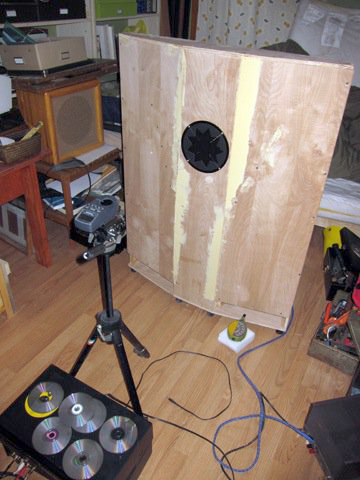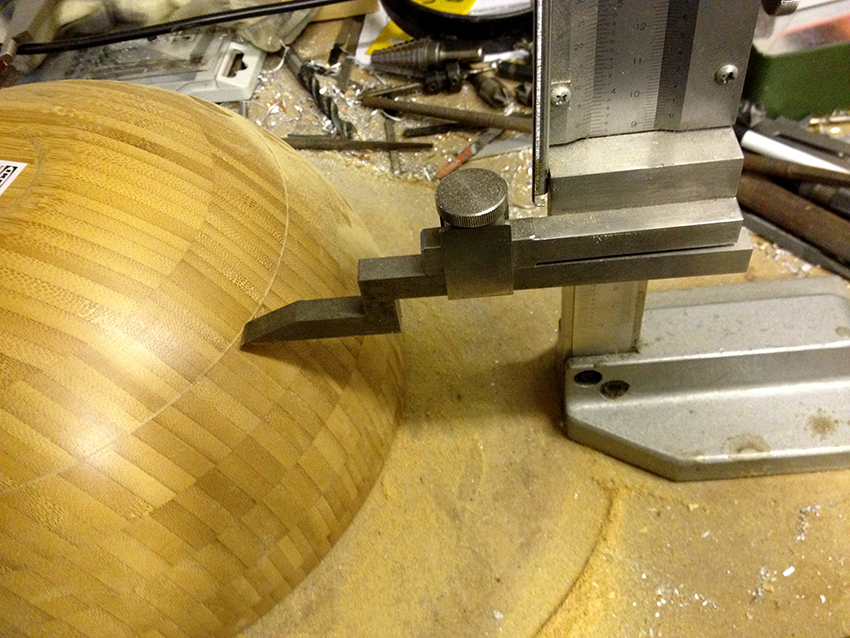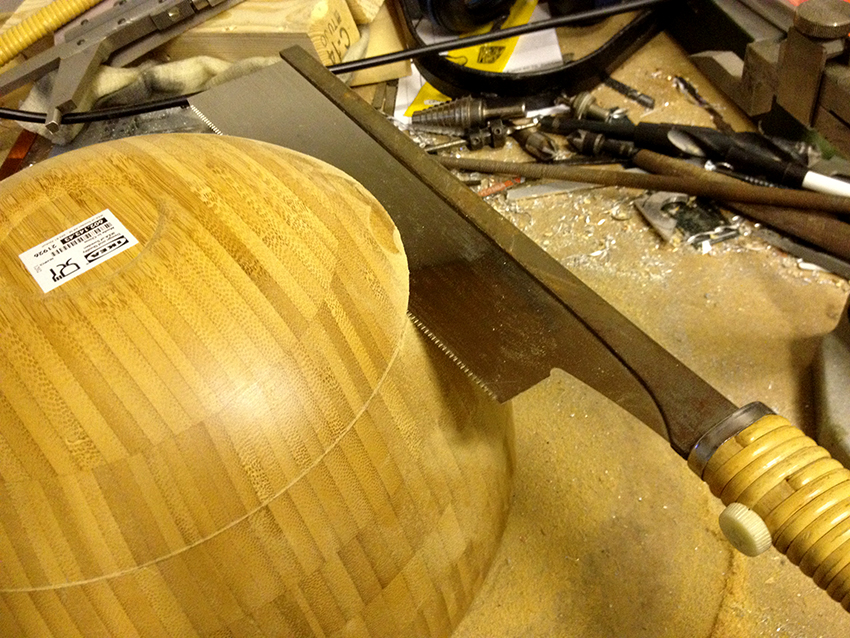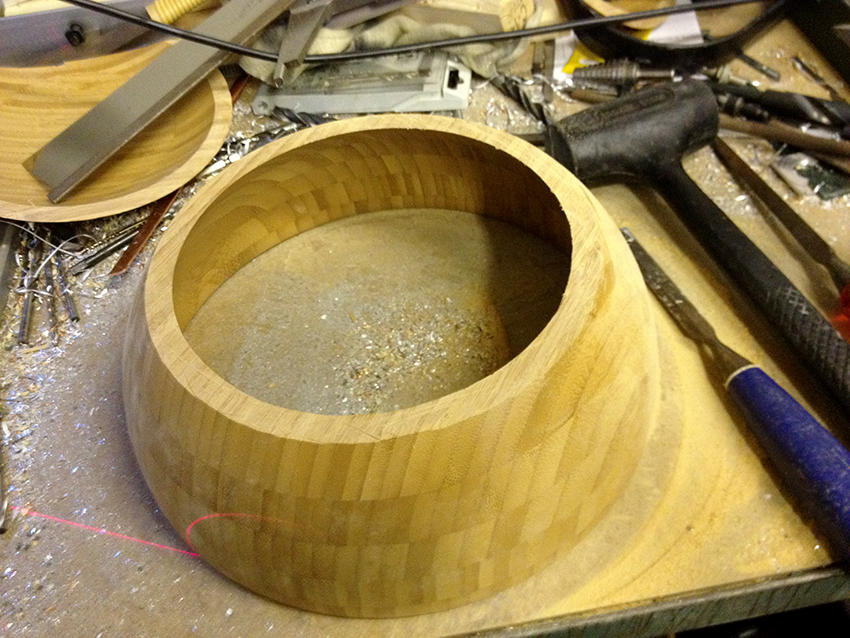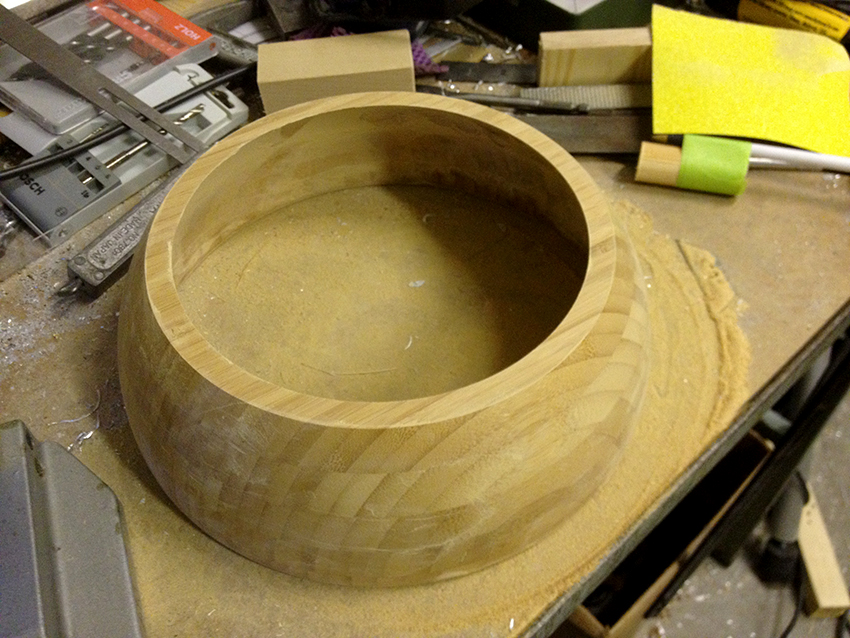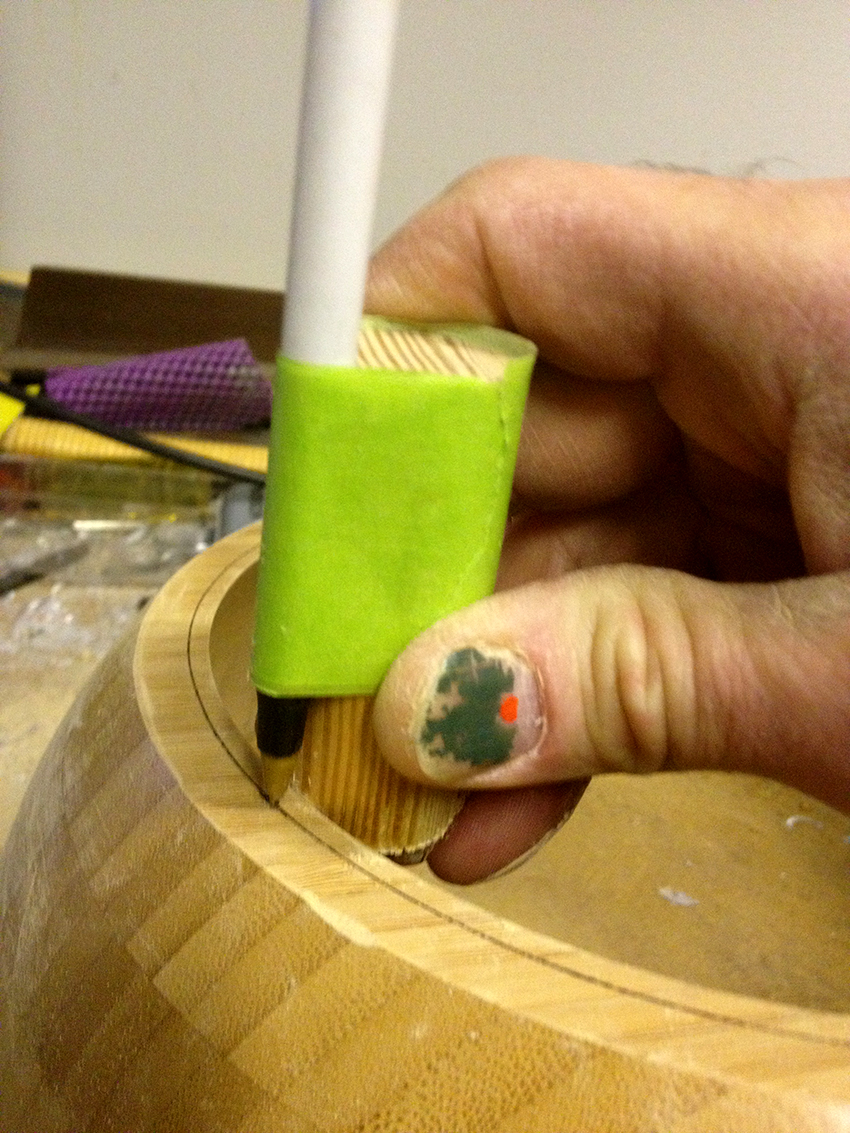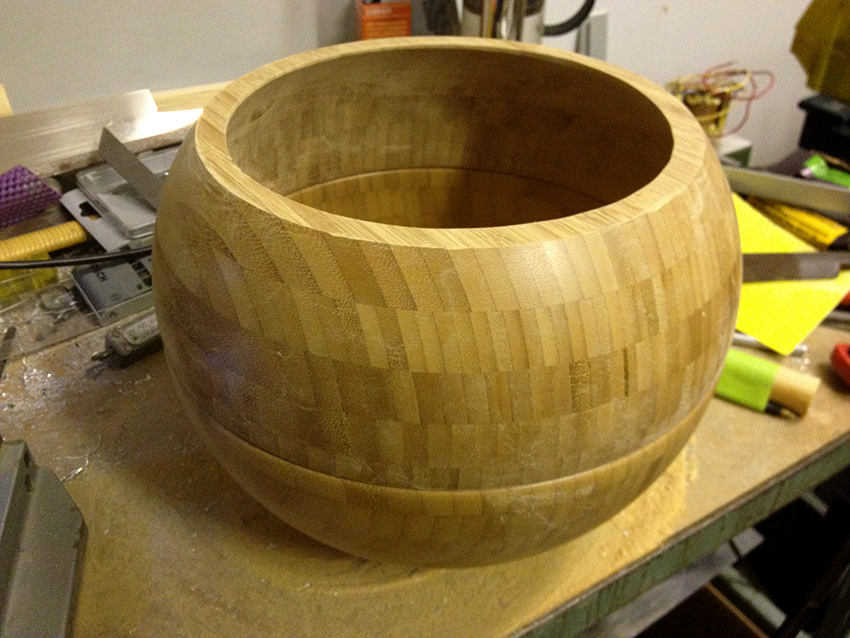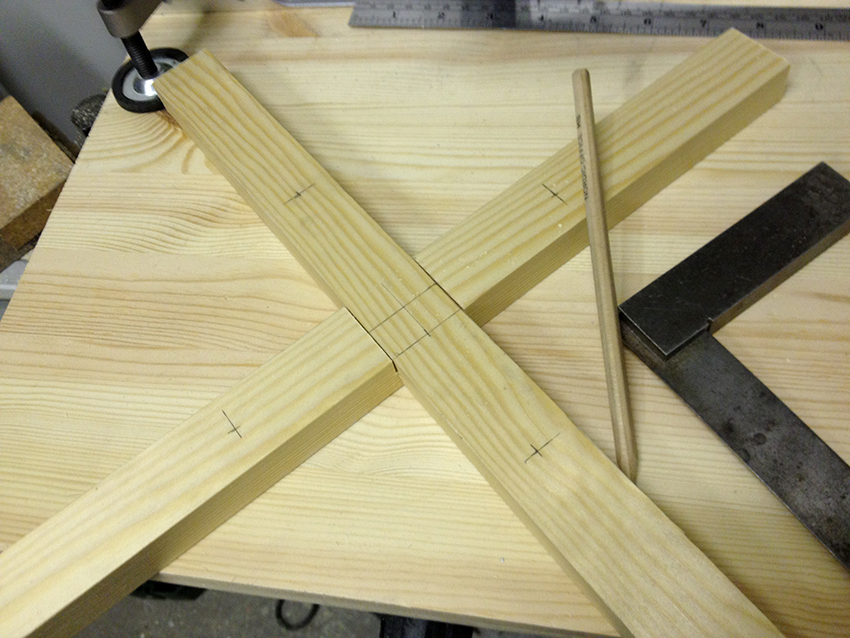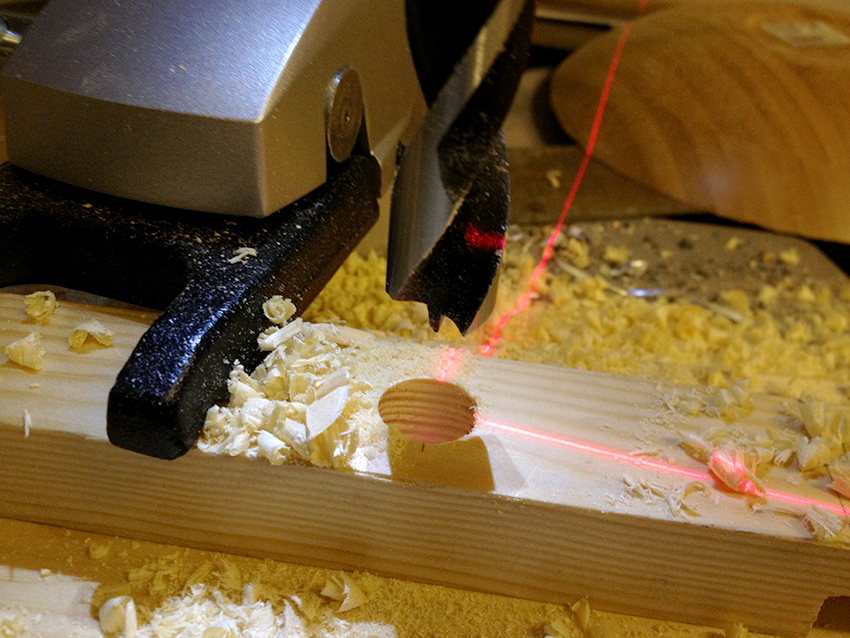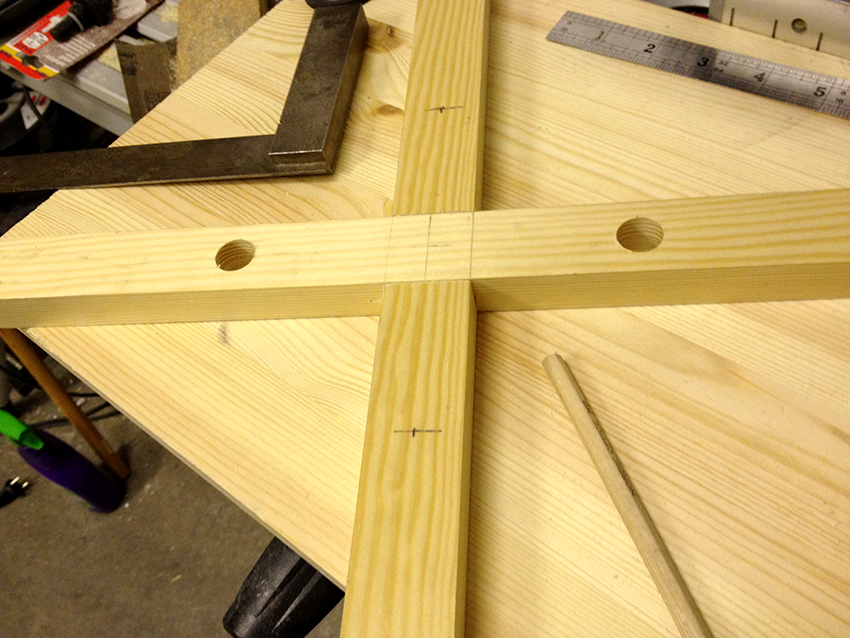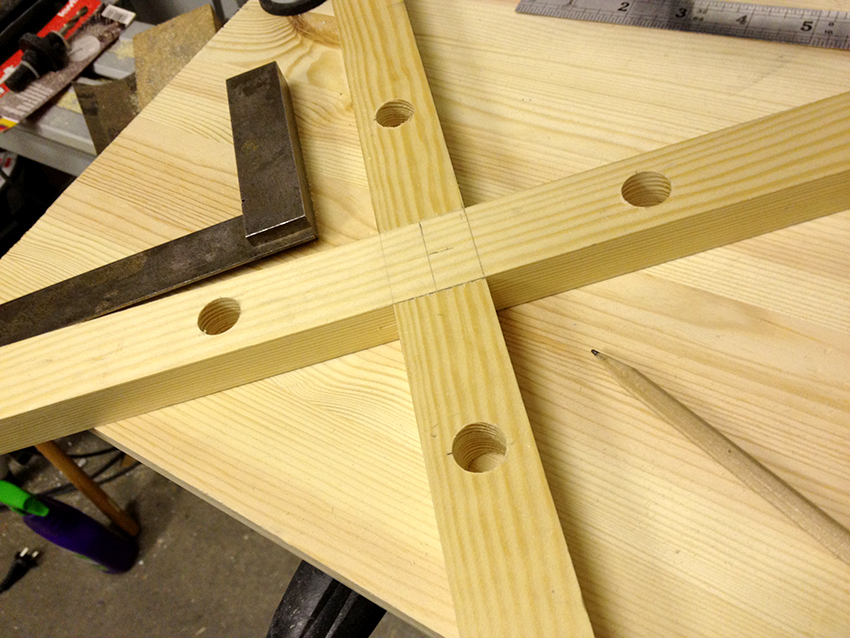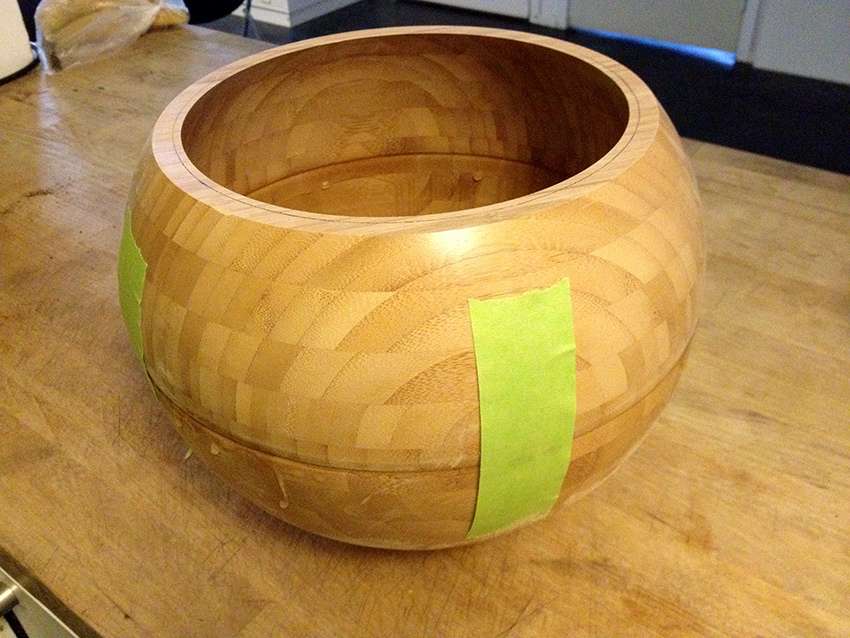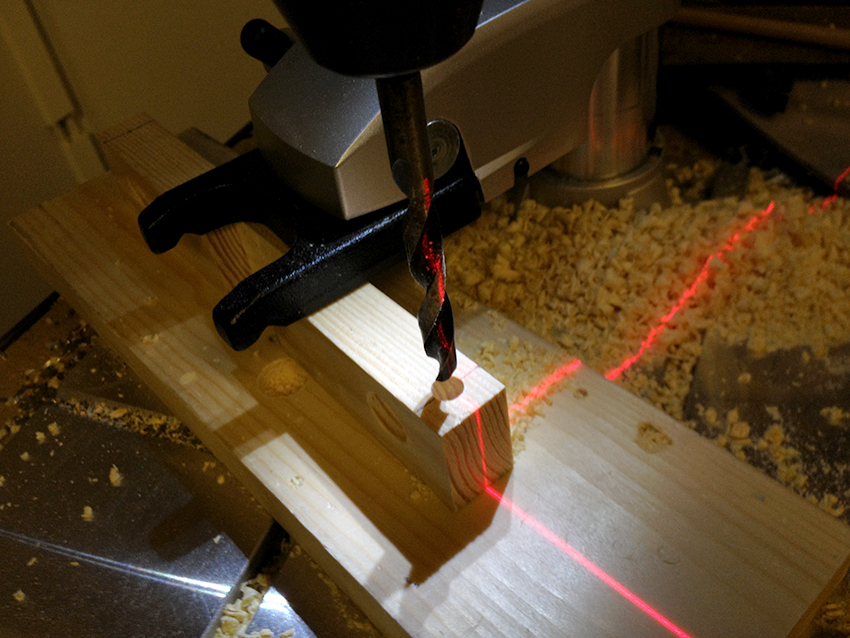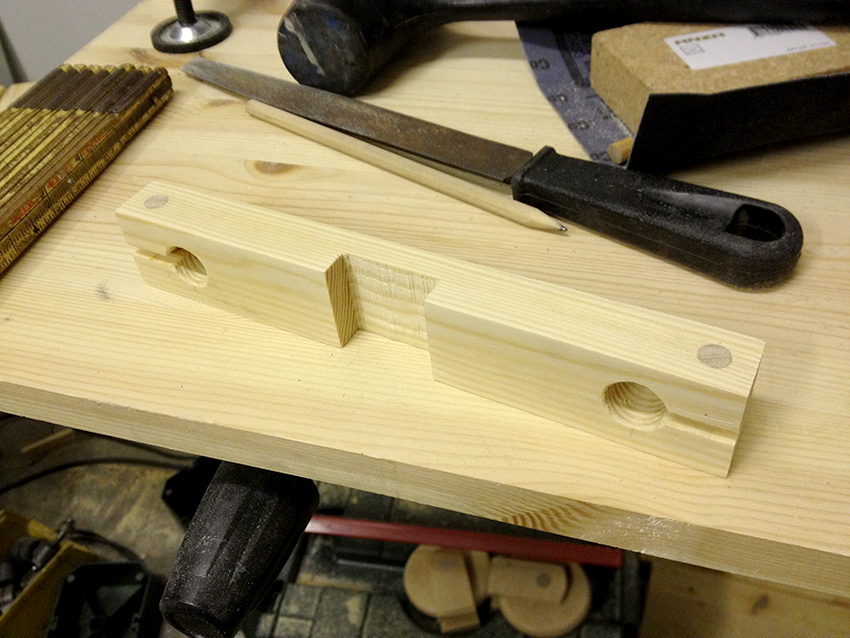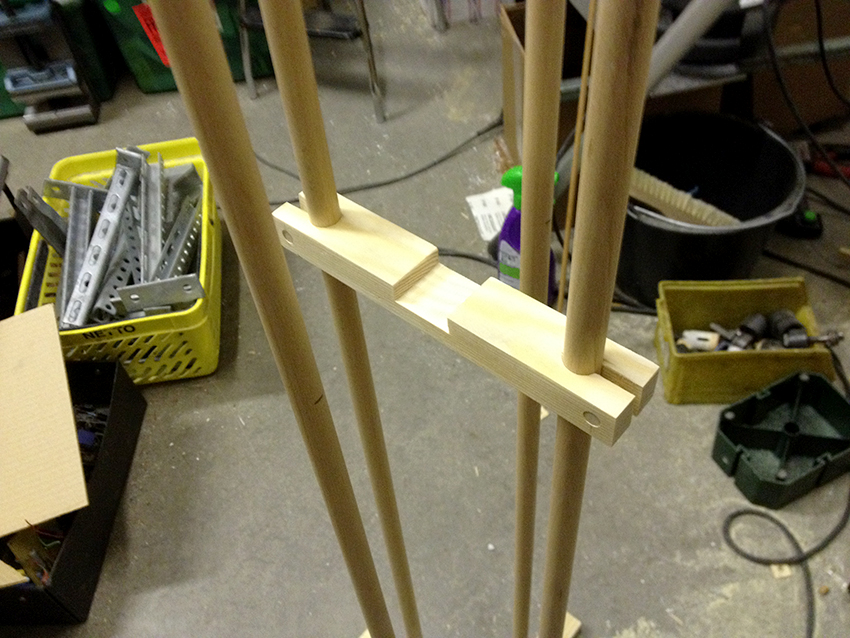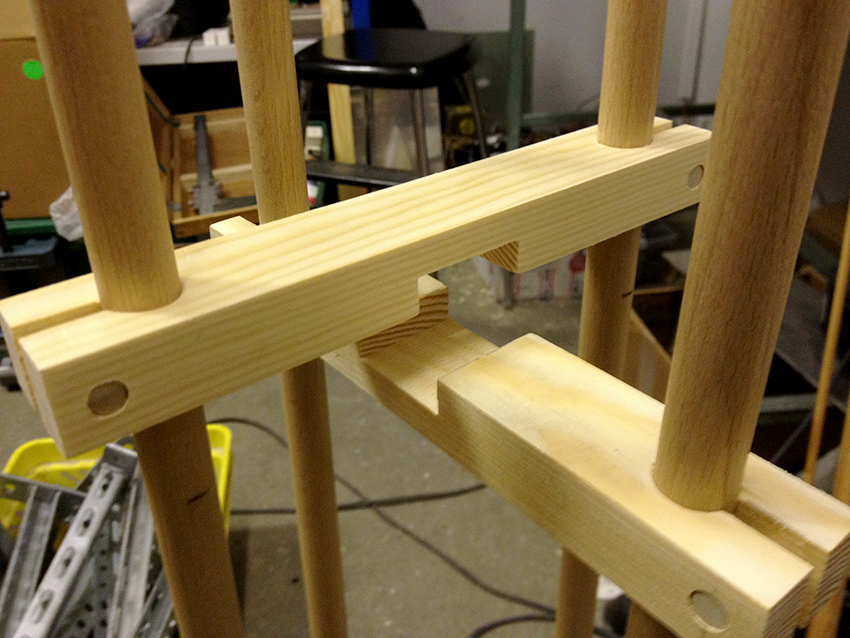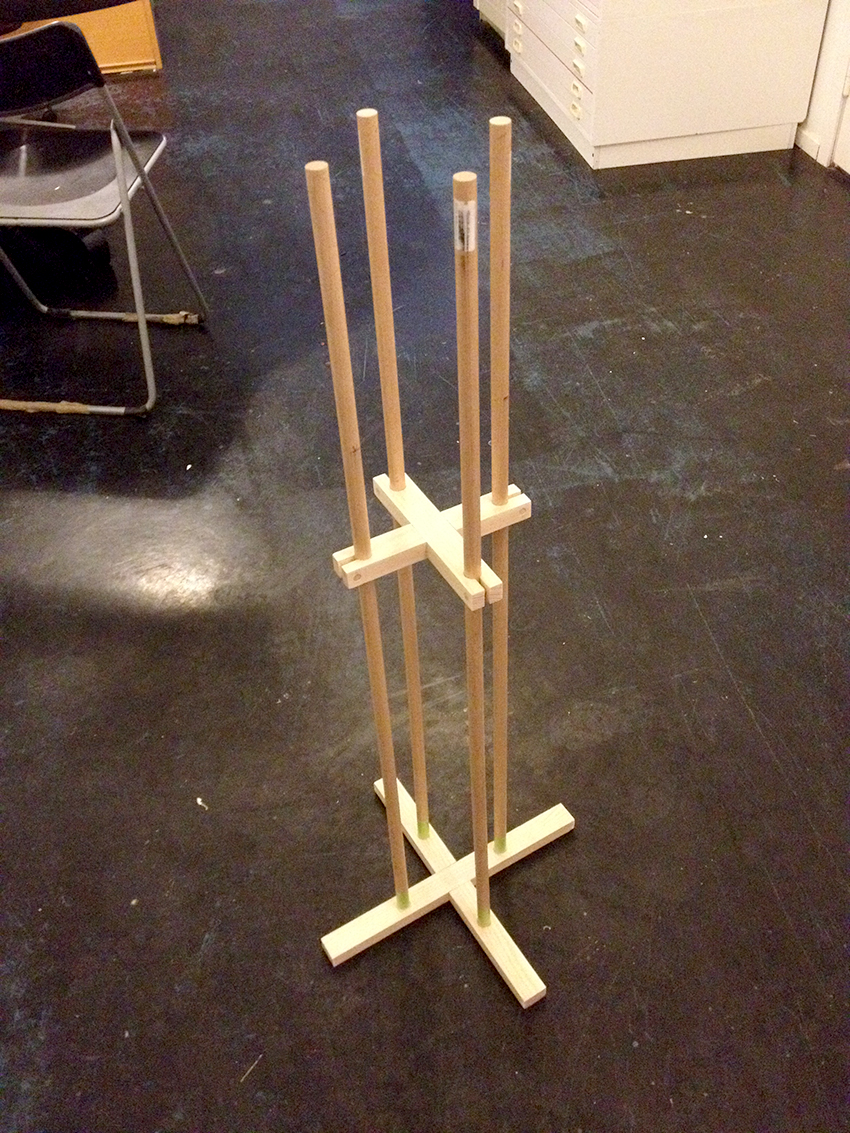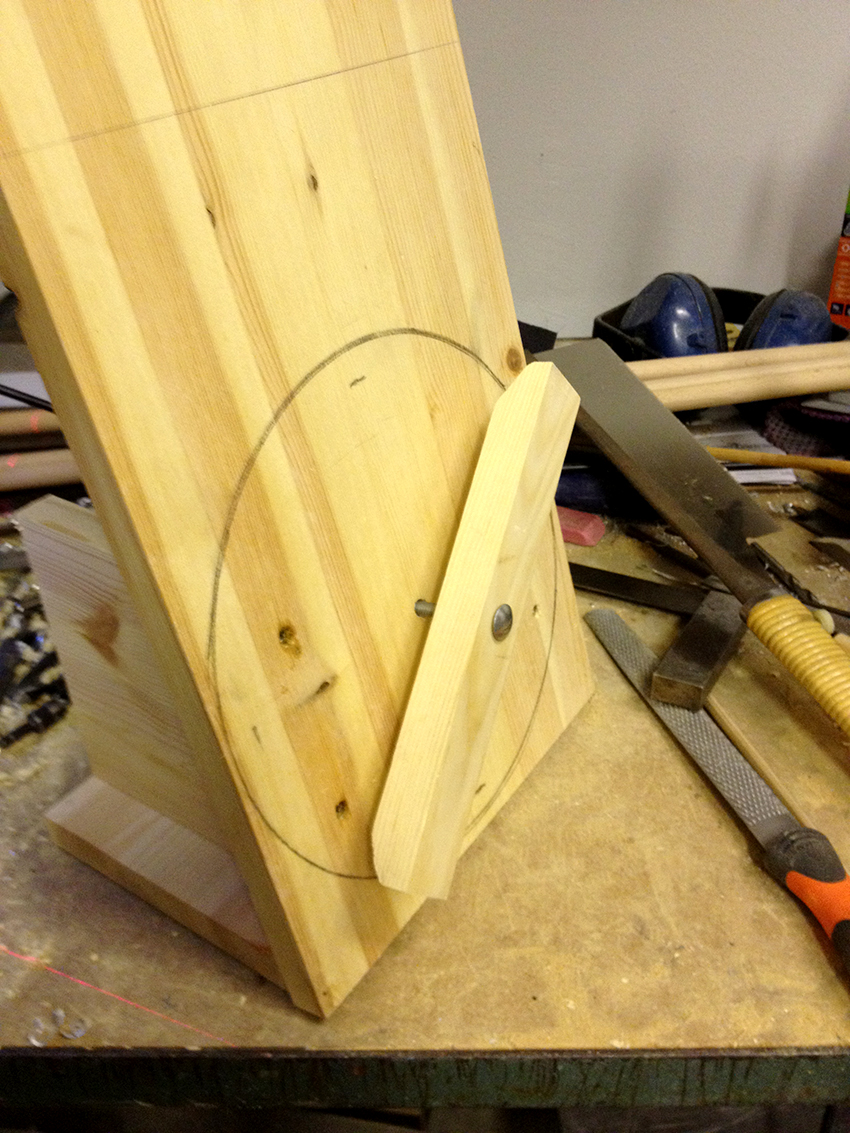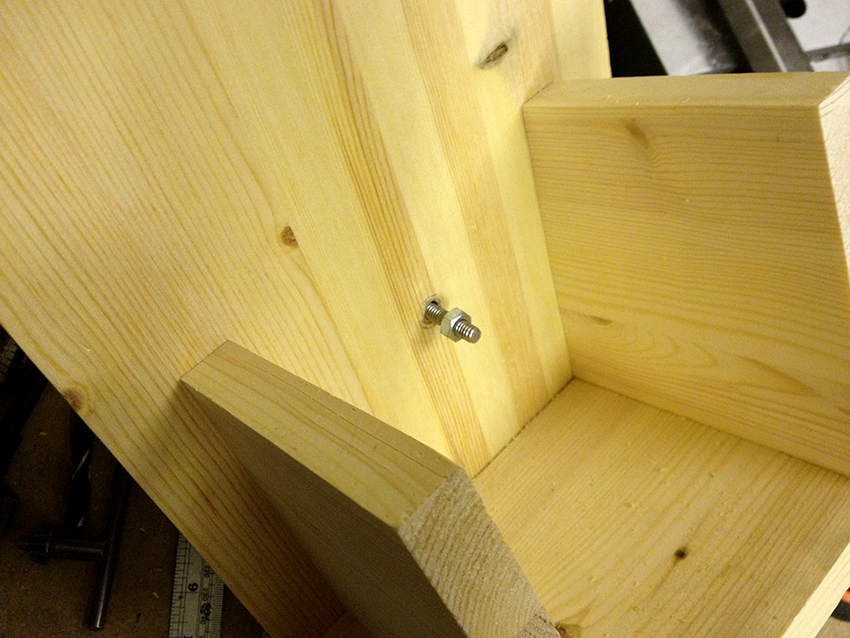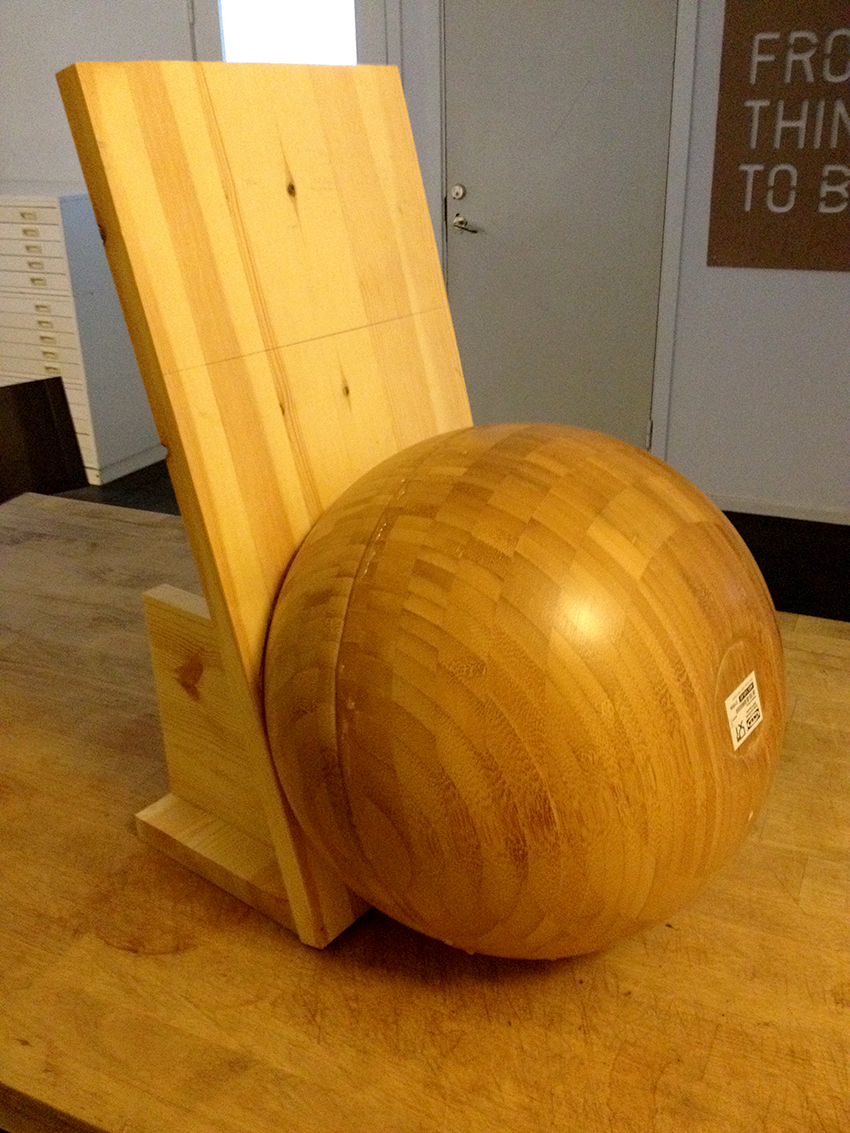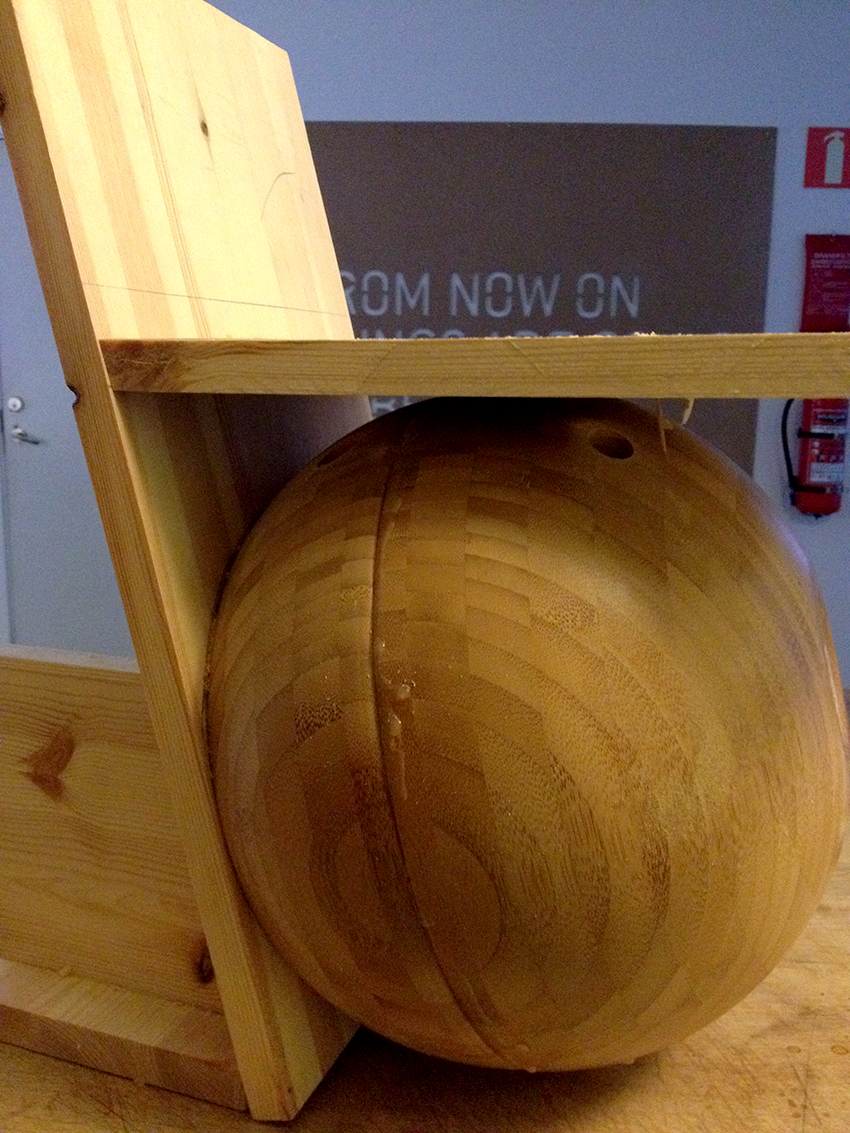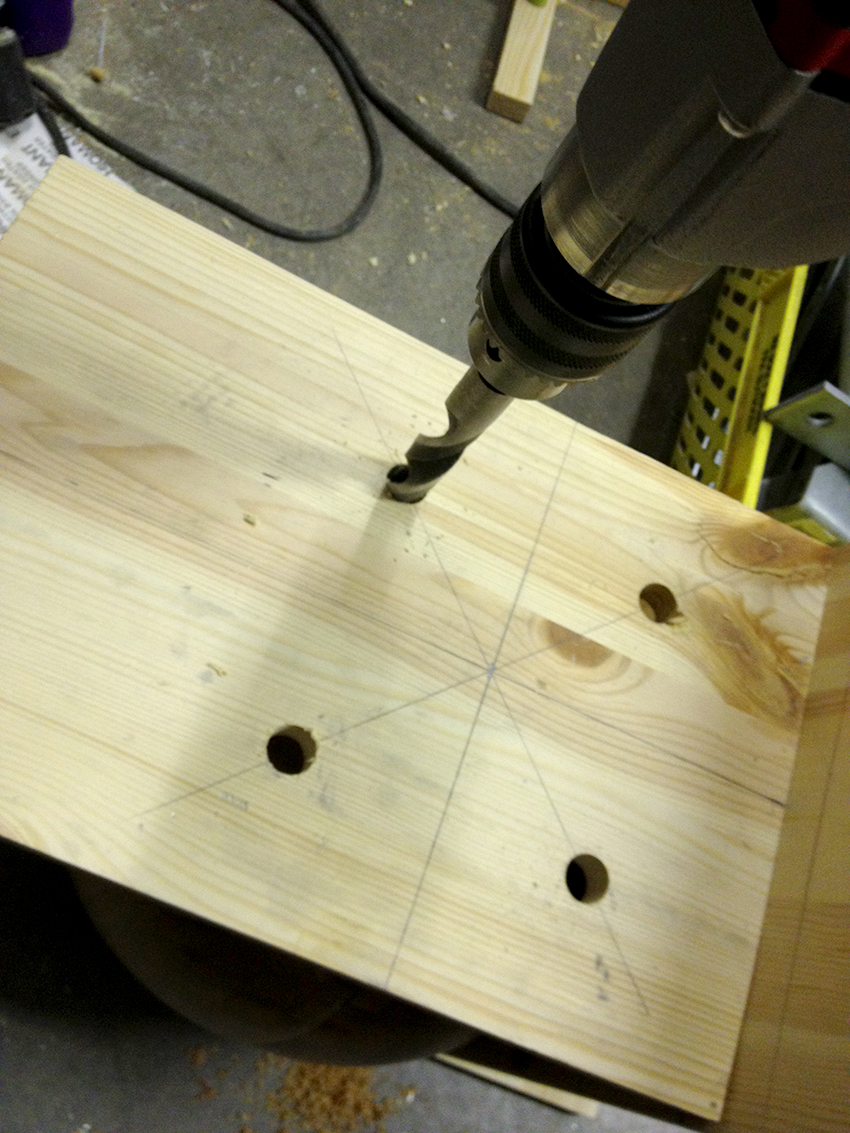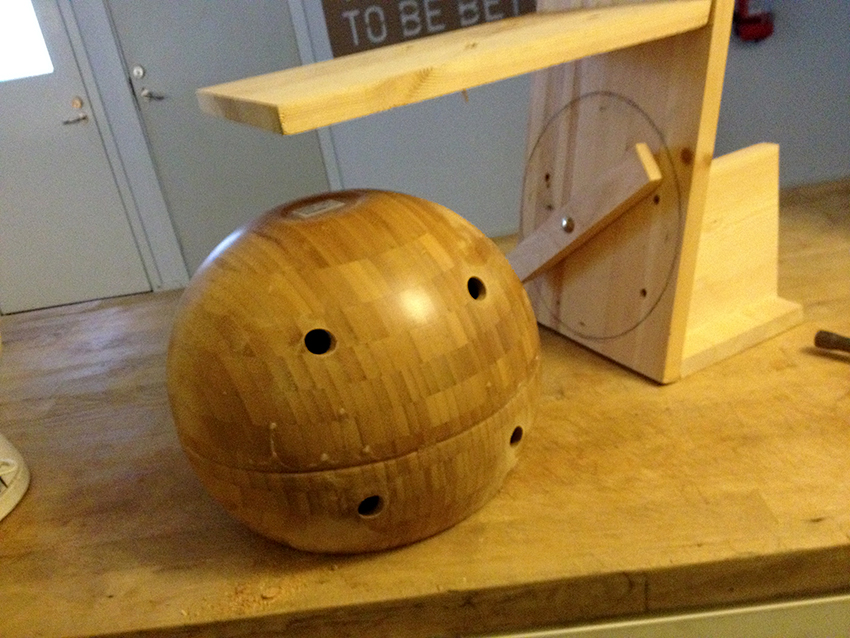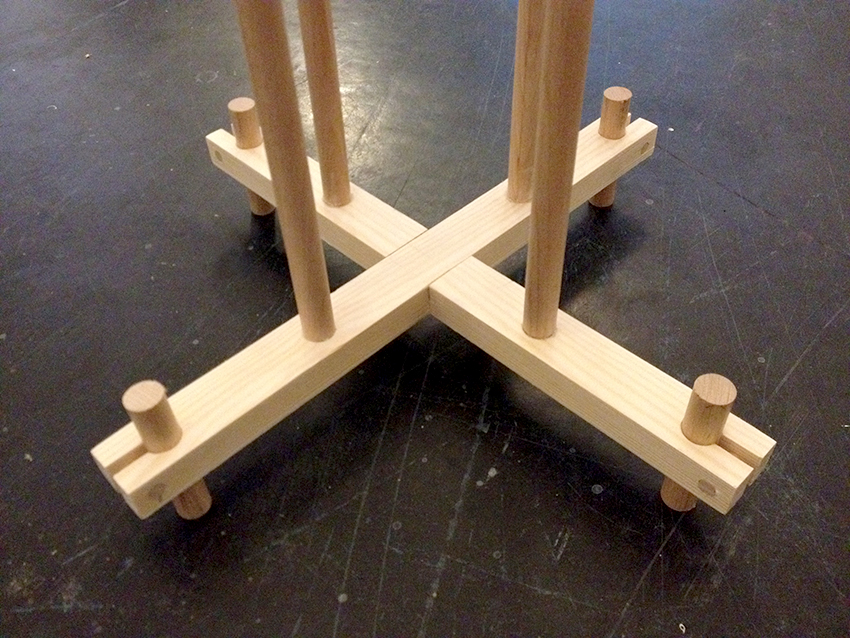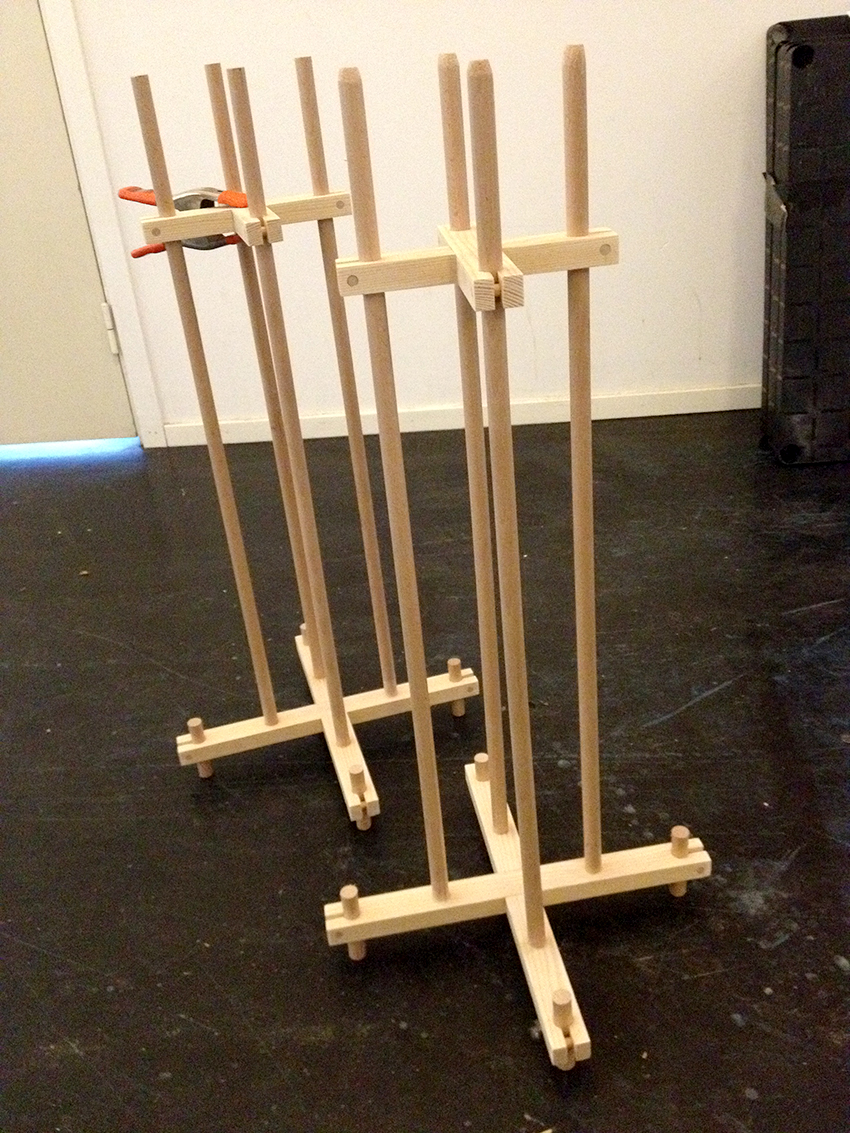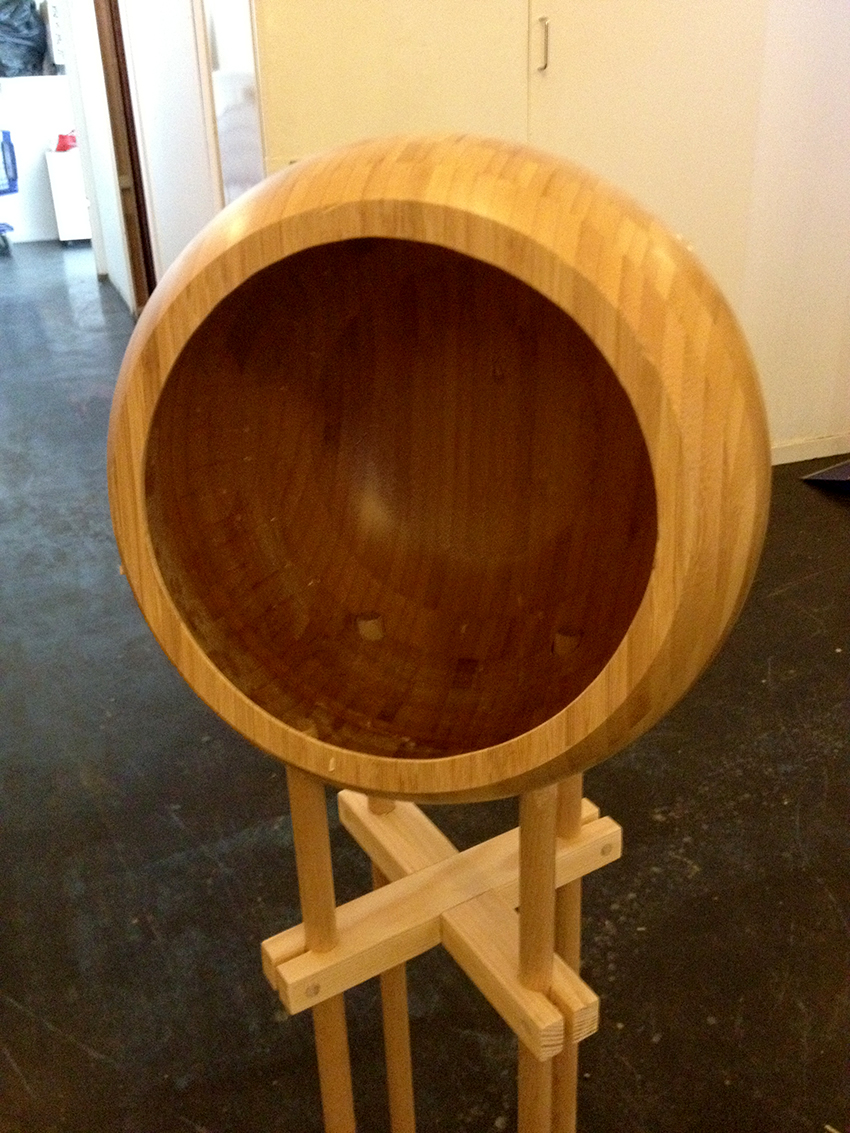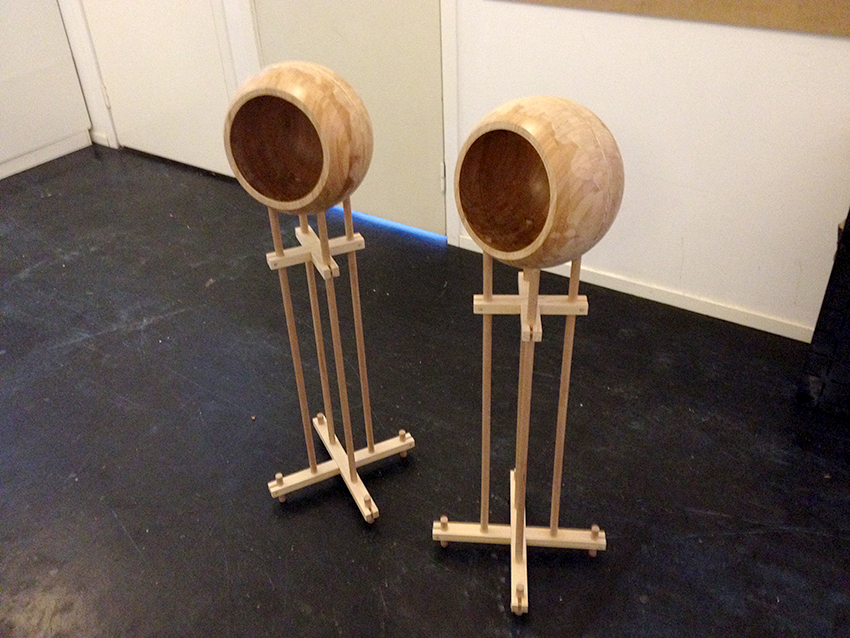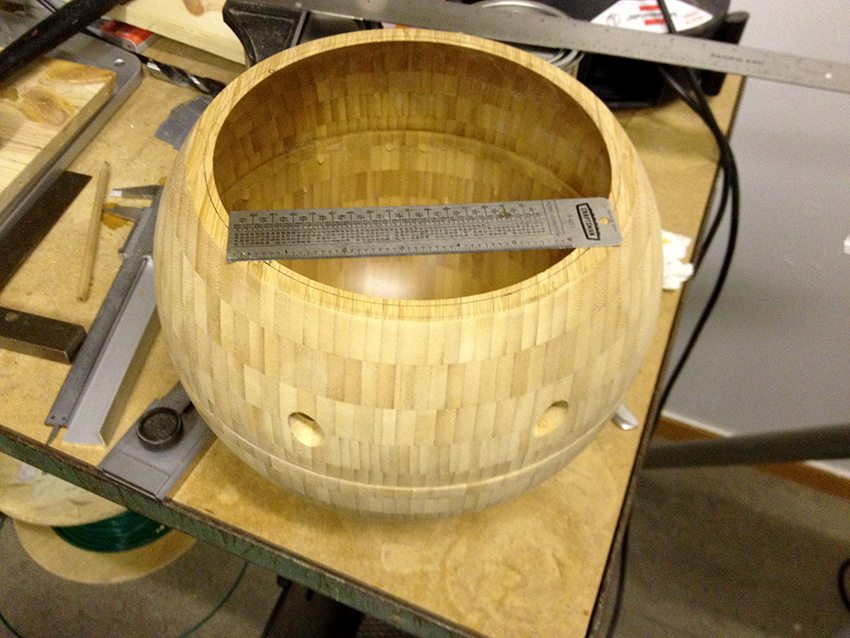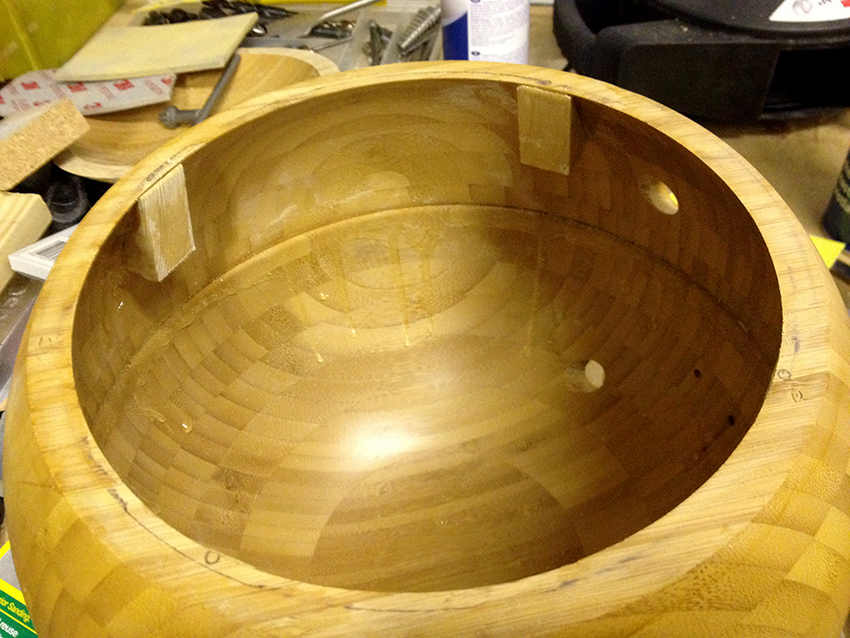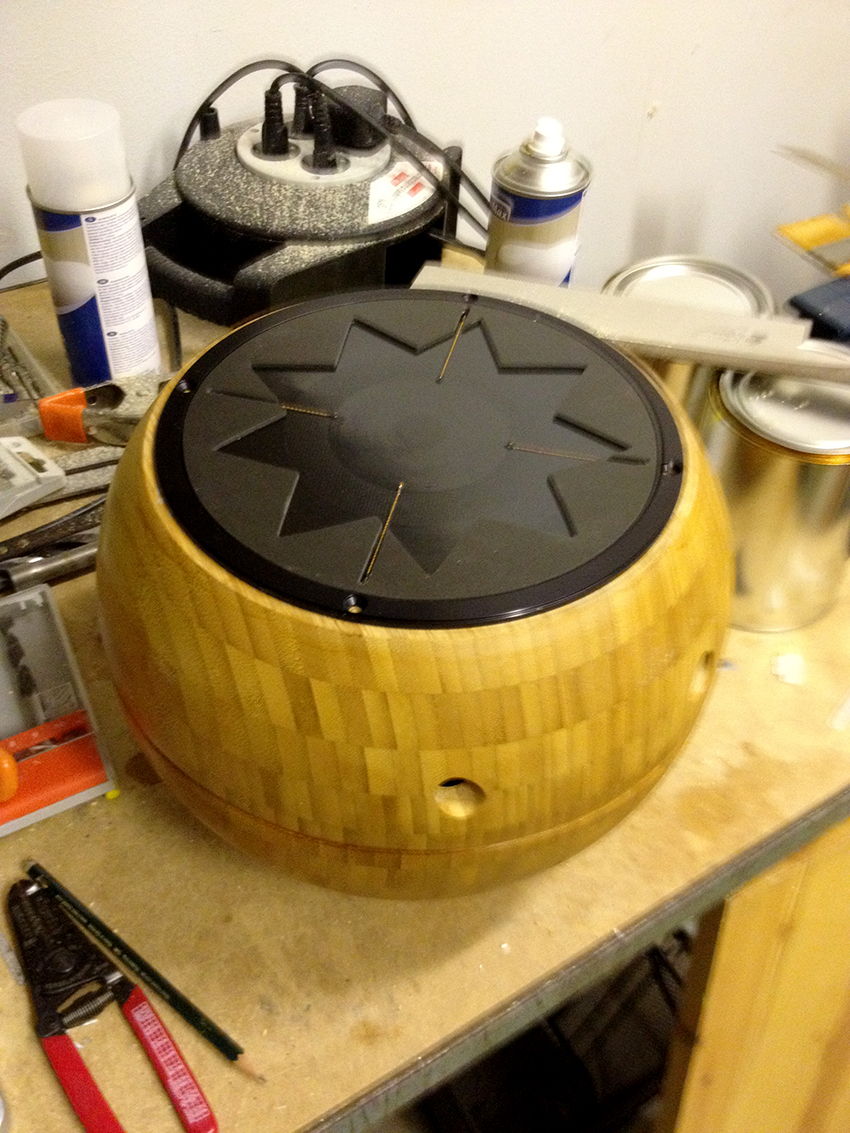this post will have so many images associated with it, i guess it’s better to get the lip out of the way first?
audio diyers, for the entire history of the “discipline”, have modified existing equipment in order to save money, time, or metal and woodwork. and perhaps most importantly, face. but with the emergence of global furniture and home renovation suppliers, like IKEA, The Home Depot, Hornbach or BauHaus… many have taken advantage of even more than just gear. whole sections of hifi review rags have recommended side tables for phono bases, bean bags for isolation and various other chatchkas for “damping” or “room treatments”, to name a few. if you look around, there’s all sorts of “repurposing” with crap from these places. some of it, ingenious!
at the last ETF (european triode festival), i saw a speaker project Jan Didden had done with the nose cone of an antiaircraft missile (really) and a salad bowl… it was gloriously inspiring! i laughed, i cried. it sounded good too! on so many levels, repurposing military gear, and surplus or unwanted scrap is a spiritual effort, as far as i am concerned. and so here we are. i wanted to make something entirely from stuff one gets from these huge conglomerates. and i wanted it to reflect my own taste but still be obvious about where it all came from.
i am lucky in life to have a workshop. it isn’t big or fancy. there are limits to the work i can do with it. i need a milling machine, for example, and a toolmakers lathe, and a wood lathe… not as big as jeffrey jackson has, as i would just buy a turned horn from him instead of making one. but of course, it would be great to have a TIG welder and a cutting torch, too. and if i had a bit more space, a table saw would be lovely. yet, on the whole there are a lot more things i can do with my shop than what i can’t. and when it comes to things i can’t, why go through the mess and noise when you can let a multinational corporation do it for you? that’s the diy spirit!
okay, i have a thing for manger drivers, at the moment. no they aren’t perfect but they do many things right. they play fairly decent square waves, above 150 Hz, and there’s no need to say much more about why i like them than that. and they are simple. don’t need a tweeter… just something to deal with the first three octaves. they have dispersion problems, but that can be worked on as well. i have learned a thing or two about helping them out with current drive… read back a few blog entries if you missed that. there will be more at some point. but very importantly, they are totally suitable for a small apartment like the one i currently live in (an attic).
there are important things to be taken into account. mangers are fragile. they bottom out at 5mm (in the rearward direction), which is the death of the driver. they really shouldn’t exceed +/- 3mm ever. lots of distortion and crappy sound anyway, at those excursions. low frequencies or a big duty cycle is the thing that will destroy them. they cost a fortune too. they have a limited dynamic range and maximum SPL range suitable only for a small room… if you can live with that, they can live with you. they are great candidates for recording monitors! which is one of my primary needs…
a sealed box is a good idea for this kind of situation. it puts a mechanical limit on the low end and protects the driver. 7 liters will get you down to 100 Hz (- 3dB) with current drive, and 150 Hz (-3dB) with a standard amplifier. but you risk breaking them on peaks (30 watts peak at 100 -200 Hz on a regular basis will soon kill your manger. this is experience, not conjecture). any sensible person will cross them over higher and prudently drive them. any sensible person, that is.
i have made several baffles with mangers over the years. one that worked very well was a “half-monopole” (omni from mids and below). it was meant as an experiment to make a real “full range” speaker. see the little pix below:
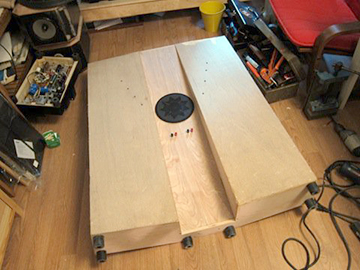
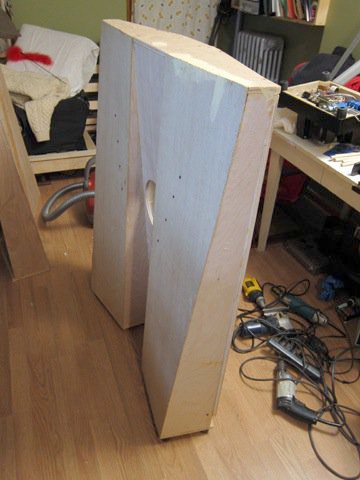 the idea was simple. use 2 drivers to double the surface area at low frequencies (at low frequencies the speaker is omni); use the baffle size to control the dispersion and the point at which the midrange lost support from the rear firing driver; take advantage of voigt’s 1/4 wave tapered pipe design to load the drivers.
the idea was simple. use 2 drivers to double the surface area at low frequencies (at low frequencies the speaker is omni); use the baffle size to control the dispersion and the point at which the midrange lost support from the rear firing driver; take advantage of voigt’s 1/4 wave tapered pipe design to load the drivers.
as per voigt, the front facing driver is mounted 1/3rd of the total length from the closed end. the rear firing driver, slightly closer. from past experience, i modified voigt’s approach by using an exponential expansion (a 1/4 wave line for 50Hz), but slot loaded the mouth with an opening of the same surface area as the two drivers. splitting the pipe horizontally allowed me to make the baffle flatter and line the drivers so close they sat over/under each other. i used a 1.2mH choke on the rear firing manger to kill the highs for use in a smaller space, and a zobel. the drivers were normally connected in series, for a 16 ohm load.
in the first pic, you see the speaker under test with my “fancy” rat shack SPL meter, and my down and dirty GEN RAD SPL meter on the port (one of my favorite pieces of test gear!). test CDs and a screen drive amp for the signals and pulses. i plotted everything on log paper. very old school and approximate.
the interior baffles were curved, and built in bent and reinforced 1/4 inch masonite, with urethane foam in the hollow spots to kill resonances. i stuffed the lines loosely with long haired wool: equally dense along the entire line, worked best. the outer surfaces were 1/2″ birch on the front, and 2 layers of laminated 1/4″ birch on the back, because of the twisting form. it worked well.
i got to -3dB at 60Hz. not as good as the Silbatone Aporia, which goes to 30Hz with one manger, but it is an actual back horn. this is a wacky hybrid transmission line. still, the concept worked, and sounded good! very “quad like”. and it was very smooth in the transition from “low” to middle, which is the hardest part with a design like this. especially with a manger driver! not quite real “full range”, but closer than most things one hears.
okay, so having gone to the insane side of things, i was well prepared to do something more sensible: a sealed box with a steep 150Hz cut off, and some kind of shared low frequency driver with an equally steep cutoff at the same place.
5 -6 liters, stuffed with wool, would work fine. enter the BLANDA MATT Serving bowl – 28cm – from IKEA.
please see: http://www.ikea.com/se/sv/catalog/products/00222973/?query=BLANDA+MATT+Serveringssk%C3%A5l#/60214343
199 SEK is pretty reasonable for something that would take a crapload of wood, glue and time with a lathe to make on one’s own.
i didn’t really know where it would end up as i just kind of improvised as i went along… here we go.
the first thing to do is buy four of them. measure your driver and figure out how much to lop off so the driver fits across with a little slop. you will need the slop for the gasket, which will make the driver seem a bit small. i calculated 1/4″ extra all around. mark the bowl by any means necessary. i used a vertical marking gauge. like i said, i am lucky in life. you can make one with two pieces of wood and a nail.
mark the bowl and cut the bottom off.
clean up, file and sand the surface.
check the fit of the driver. depending on what you use, it may be necessary to remove some material so the driver fits. in my case i had to remove a little more material to get a good fit. still, the bowl was thin enough to cause some concern. i knew i would have to add something for mounting the driver later.
i made a marking tool with some dowel, a BIC pen, and masking tape to see what i had to remove.
 next i sat them on top of one another to see if there were any issues with fit. wood is always a little variable and especially if it has been through the hallowed bowels of IKEA. i personally know a couple that split and later divorced while assembling a new bed from bespoke institution.
next i sat them on top of one another to see if there were any issues with fit. wood is always a little variable and especially if it has been through the hallowed bowels of IKEA. i personally know a couple that split and later divorced while assembling a new bed from bespoke institution.
i found two good matches for each speaker when i bought them… all good. i decided to leave the bevel at the seam of the two bowls just to reinforce where these came from. but what about a stand? i went to bauhaus and bought a bunch of birch dowel, and some clear pine. if i hadn’t stuck to my own rules about this project, i would have found some birch or beech hardwood for this part, but it had to come from bauhaus or hornbach… they don’t have the suitable stuff. in hindsight, i could have bought butcher block and cut it. the pine saved a lot of work. it was already a useful size and planed.
drill out some holes for the dowels…
might as well glue up the bowls with some extra strong epoxy.
more work on the supports…
at the height i planned to hang the baffles, a perpendicular face to the floor was not ideal. they were low enough to cause worry about a floor reflection. i calculated a 75 degree tilt for a more “optimum” vertical dispersion (couch sloth optimum). this step is good for intentionally fitting a speaker to the space. this meant the mounting holes for the bowls had to be offset. so i made a jig to get the angle right.
back to the stand, some proportional tootsies can make a big difference in good visual balance.
allright, check the fit.
next, layout the mounting holes… gotta add some material behind them because of the curved interior.
finishing is my least favorite part. it’s slow, messy and i am bad at it. the trick is to use materials you like… that makes an unpleasant job much more bearable. i like shellac! unwaxed. i mix it myself. start thin, and build it up.
here you can see the bowls with 7 coats. the last is thicker and has less alcohol in it. you can see i have added holes for interconnections through the wood. that keeps a good seal.
okay, here i will stop for now. more soon.
